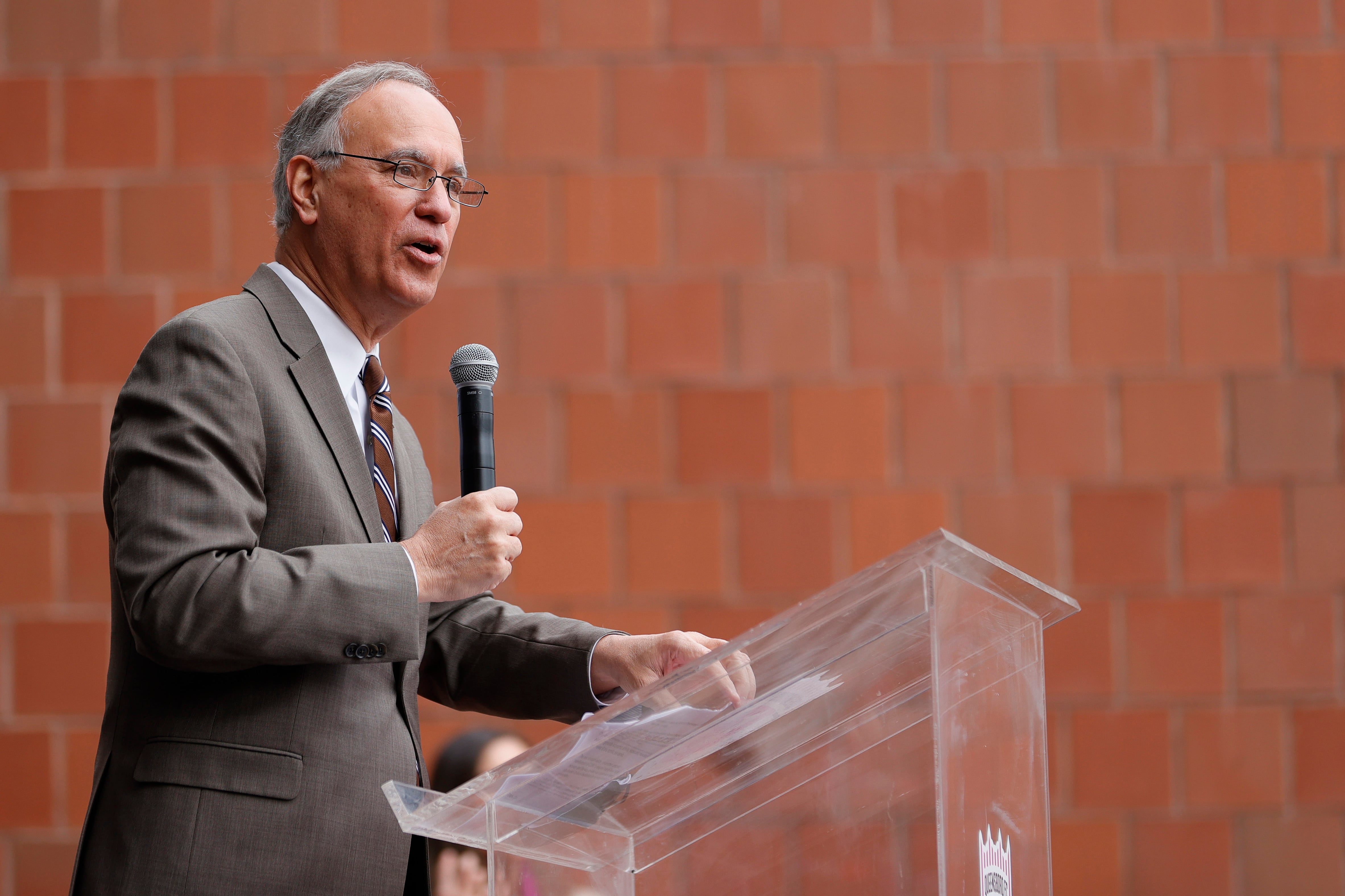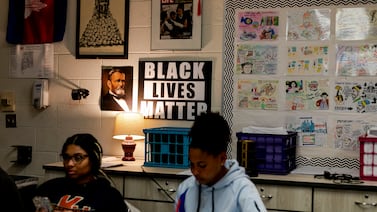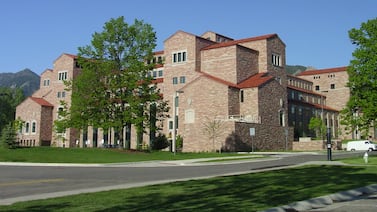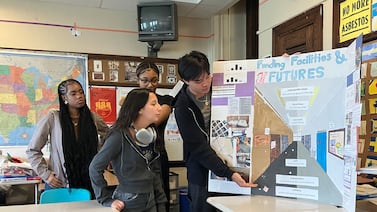A yearslong pandemic-fueled enrollment decline at the City University of New York may finally be starting to level off, according to preliminary figures released Tuesday.
Enrollment in the city’s network of public colleges — like that at many colleges across the country — had been in freefall since the start of the COVID pandemic, dropping 17% from roughly 271,000 in 2019-20 to about 226,000 last school year, according to city figures.
The losses in CUNY’s community colleges, which enroll greater shares of low-income, Black and Latino students, have been even steeper, falling by 26% over four years.
But that trend may finally be tapering off. Overall undergraduate student enrollment is up about 2% from last year, with the new freshmen classes bigger than last year’s counterparts, according to preliminary enrollment data from CUNY.
“Enrollment might just sound like a lot of numbers, but it’s fundamental,” said Chancellor Félix Matos Rodríguez during his State of CUNY address Tuesday. “It’s a tangible measure of how well we’re delivering on our core mission of providing access to a first-rate education to everyone in our city.”
He added: “We have a reason to believe we have turned a corner.”
But even with the modest increases this year, CUNY’s enrollment remains far below pre-pandemic numbers, reflecting a seismic shift in recent years in college enrollment across the country.
The economic pressures of the pandemic, the ongoing burdens of student debt, and shifting perspectives on the value of college have combined to take a massive bite out of college enrollment nationwide.
New York City hasn’t escaped that pattern.
After a decade of rising college enrollment rates, the percentage of New York City public high school graduates entering college or other postsecondary programs dropped from nearly 81% in 2019 to 71% in 2021, the most recent year for which data is available.
The declines were even steeper for Black, Latino, and male students, who enrolled in college at a lower rate to begin with.
“I’m definitely also noticing a rise in interest in non-college options,” said Danielle Insel, the director of postsecondary readiness at Urban Assembly Institute of Math and Science for Young Women in Brooklyn. “I definitely think there’s economic pressure, and I do think there’s some kind of societal shift in what their futures can look like… I think they’re so exhausted by school, so drained that the idea of more college is overwhelming to them.”
Enrollment in the city’s public universities is an important indicator of the city’s overall economic health. CUNY’s colleges are unusually effective at lifting students from low-income families into middle class jobs, and the majority of jobs posted in New York City still require a bachelor’s degree.
More than 80% of CUNY freshmen are New York City public high school graduates, making the relationship between the two systems a critical part of any effort to boost college enrollment.
CUNY, NYC’s Education Department seek to strengthen partnership
The day before his speech, Matos Rodriguez and Banks touted a joint initiative to send each senior expected to graduate from a New York City public high school a personalized acceptance letter indicating they had a spot at CUNY if they wanted it and inviting them to apply.
That’s not a change in admissions policy — CUNY’s community colleges have long had open admissions for high school graduates — but it could help give a recent graduate waffling about starting college an extra bit of motivation, the two leaders argued.
Multiple experts who have studied similar interventions said the effort will likely have a small impact, at best. But given the ease of distributing the letters, even a tiny bump could be worthwhile. Guidance counselors began handing them out this week, and students may also receive them via email.
“A lot of these types of nudges are cost effective not because they’re hugely effective but because they’re low on cost,” said Philip Oreopoulos, an economics professor at the University of Toronto who has studied similar efforts. “I think for some [students] it’s likely to make a difference.”
Other experts noted that the effectiveness of the letters hinge on the specific barriers students face.
“Maybe a small piece of information can be really motivating, particularly for families who are unaware this [admissions] guarantee already exists for them,” said Oded Gurantz, a professor at the University of Colorado–Boulder who studied an unsuccessful effort by the College Board to reduce roadblocks in the college application process. “If the barrier is costs, then sending the letter is unlikely to produce a big benefit.”
CUNY is also waiving application fees for New York City high school seniors, a move that is immensely helpful in convincing reticent students to submit CUNY applications, said Insel, from the Brooklyn high school.
Affordability takes center stage
For students who do decide to enroll in CUNY, the system’s affordability often takes center stage in their calculations.
CUNY’s tuition runs just under $3,500 a semester for state residents at four-year colleges and $2,400 a semester for New Yorkers at community colleges. Roughly two-thirds of CUNY students pay no tuition because of a combination of state and federal financial aid, and 75% graduate with no debt, according to the university. CUNY forgave roughly $100 million in debt accrued during the pandemic.
For recent Queens high school graduate Paul Blake, enrolling at CUNY’s Queensborough Community College was a way to enter a nursing program while avoiding the extra costs of room and board.
“I always knew I didn’t want to go out of state, it costs a lot and I felt with CUNY, I’d be closer to home,” said Blake, who hopes to either transfer to a four-year college or transition directly into work after completing his nursing program.
Elizabeth Nicotra, who graduated from Tottenville High School in Staten Island last spring, got into SUNY Cortland — the school that was initially her top choice — but ended up choosing Macaulay Honors College at CUNY’s College of Staten Island because it offers free tuition.
“Why would you choose debt over free college, especially when the program at Macaulay is so amazing,” said Nicotra, who hopes to be a physical education teacher or physical therapist.
CUNY officials are trying to spread the word about the affordability of their programs, and recently launched an ad campaign called “Degrees Without the Debt.”
CUNY’s recent expansion of online programs could also be a helpful way to lure in students not ready for a traditional college experience, Insel believes.
“I think now they’re recognizing that people want to do college in different way,” she said.
Michael Elsen-Rooney is a reporter for Chalkbeat New York, covering NYC public schools. Contact Michael at melsen-rooney@chalkbeat.org.





